A Wireless Color-Sensor Module for Sensor Networks in Ambient Intelligence Applications
Subject:
Close to human perception and stable color
sensing is an ubiquitous problem found in numerous disciplinces, e.g., in
machine vision for classification and recognition or in general intelligent
systems, for instance for intelligent illumination systems in home or working
environments.In particular for systems and applications of Ambient Intelligence
small, flexible, and preferably wireless modules and networks of such sensor
modules are required. In this project, a wireless color sensor was developed
based on MAZeT color sensors (MCS3AT, MCS3BT, MCSi) and MICA dot modules. An
additional dot extension board and appropriate software was designed and
implemented. The system was validated for typical color classification tasks,
e.g., for medical laboratory object recognition. Future work will consider
the use of multiple wireless color-sensor modules as a component for intelligent
illumination systems, both for machine vision as well as for home applications.
Abstract:
The
information conveyed by color is of significant interest in numerous application
fields, ranging from machine vision applications for quality assurance as
well as object segmentation, classification and general recognition tasks
of intelligent engineering systems. For instance, the classification of medical
objects displayed below, which has been pursued in a separate project
activity, shows clearly the issue and benefit of color for the recognition
process.
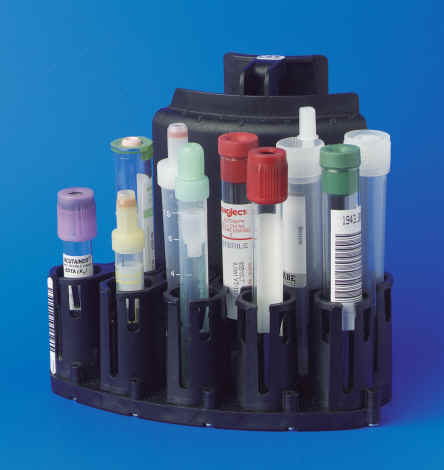
For corresponding sensing activities,
in particular, the stability or color constancy of the sensing element and
module is decisive for the overall system performance. A common problem in
machine vision is the aging of the applied light sources,
which lead to a gradual degradation of system performance. A similar problem can
arise for color sensors with insufficient
long-term stability of their transfer characteristics. In addition, the
application in distributed embedded systems and applications, e.g., for Ambient
Intelligence, imposes further restrictions on the physical
size and communication of an aspired sensor
modul. Minimum size as well as wireless communication would be desirable
features for a color-sensor module applicable to the above outlined fields and
needs.
As
a system with such characteristics was not available, a project was started to
design such a module, incorporating appropriate stable color sensor elements on
a embedded platform suitable for Ambient Intelligence as well as other
applications. With regard to their unique properties sensors from MAZeT where
selected for the project (MCS3AT, MCS3BT, MCSi; http://www.mazet.de).
As embedded system platform the MICA system and MICA dot modules (http://www.xbow.com)
where selected, which were also the common platform in a local Ambient
Intelligence priority programme in the context of which our color-sensor module
project was initiated. An extension board with
a MAZet transimpedance amplifier for the three color channels was designed for
the MICA dot system.
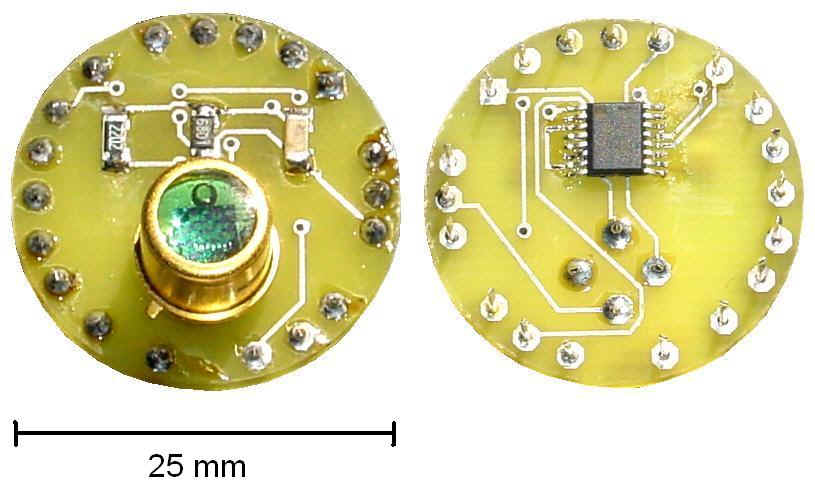
The output voltage
range for the photo current range of these amplifiers, whiche are fed to the
local ADC of the MICA-,module in a sequential fashion, is flexibly be determined
by programming. More details can be found in the publication enlisted below. The
following schematic describes the color-sensor board circuit.
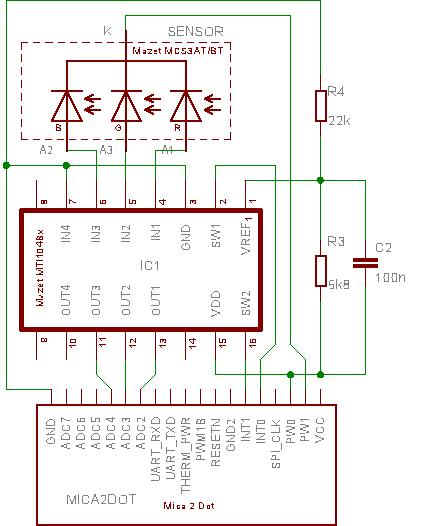
This
extension board was attached to a standard MICA dot mote. Software was developed
by the system designer both for the mote as well as for the base station, that
serves to communicate with the PC (TinyOS and Linux/Cygwin). The software was
enhanced for the principle polling and reading of multiple distributed
color-sensor modules.
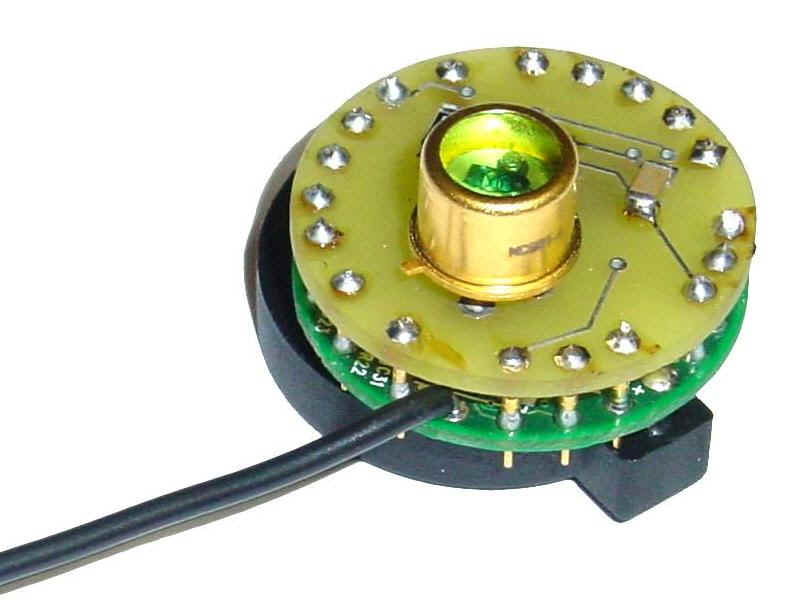
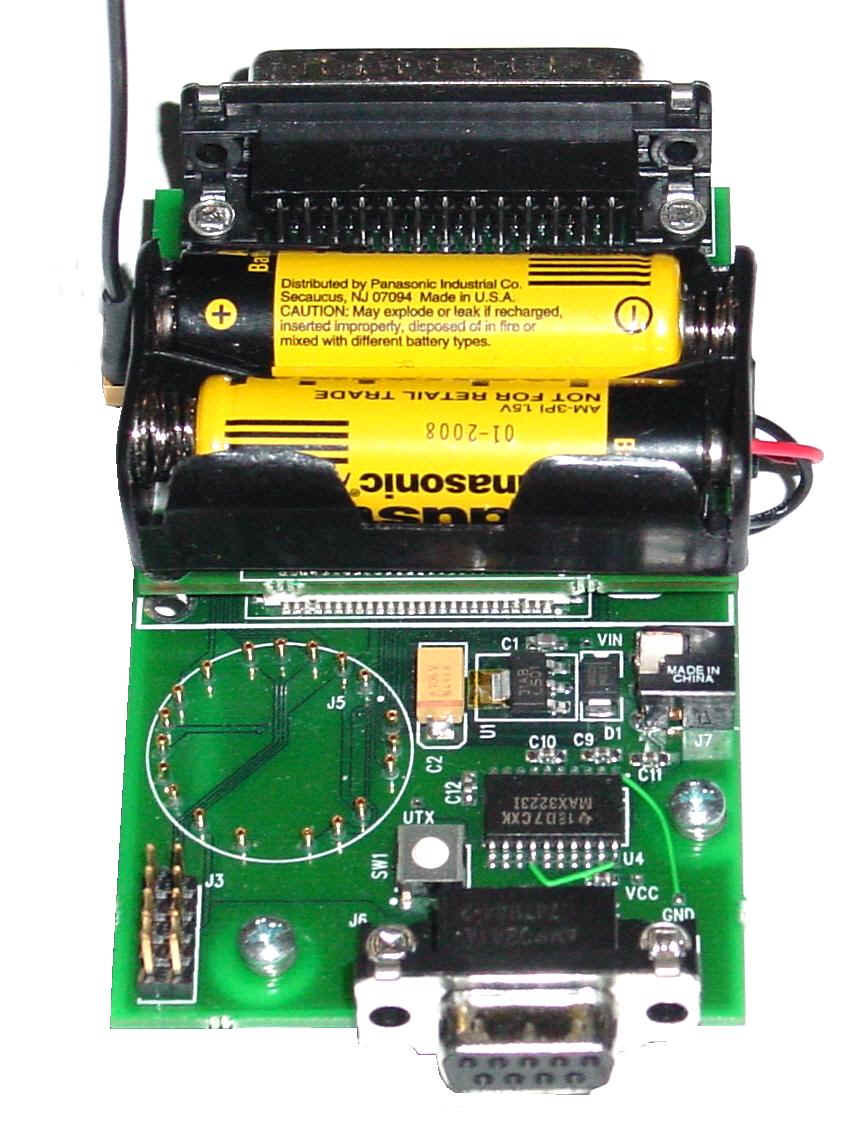
A basic validation of
the hardware setup and the developed software was carried out employing an
LED-based light source with temporally changing color composition:
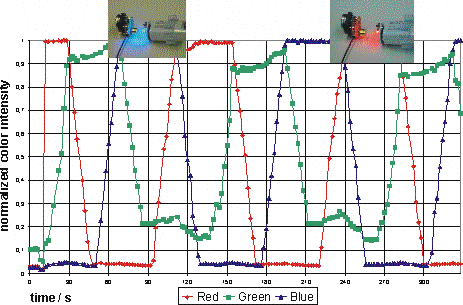
After basic validation
of the system's operability, it was applied to a more realistic task of color
classification. Two series of 100 repeated measurements for each color (class), were made with the
MCS3BT, based on a calibration paper stripe displayed below, and used in NN-classification (QuickCog). For this simple
problem, a classification rate of 100% could be achieved.
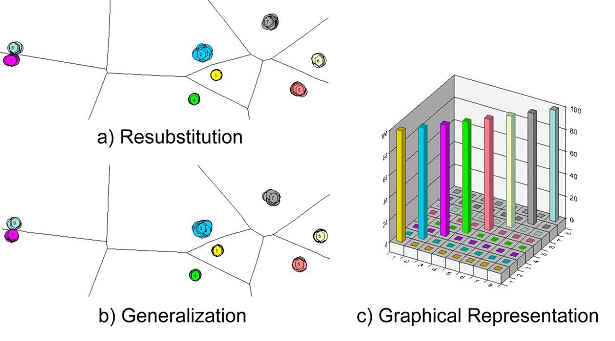
In the next steps of
the work, the system was applied to a more practical problem abstracted from
another R&D-project in the field of medical laboratory
automation (This project will be reported in detail on a separate page). Medical
probe tubes have to be distinguished prior to handling and automated
decapping by a laboratory robot system. Part
of this recognition process is used as another benchmark for the color
classification system based on the wireless color-sensor module. The following
simple setup was employed for the color classification investigations:
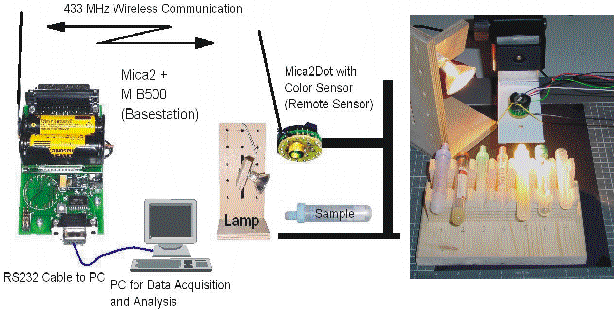
A collection of seven
tube types and an eight uncapped tube were the basis for generating a training
and a test set with 100 recordings each and overall eight classes to be
distinguished by the colr classification system. Again, data was registered by
the previously illustrated setup and transferred to the QuickCog system for
NN-classifier training, resubstitution, and generalization.
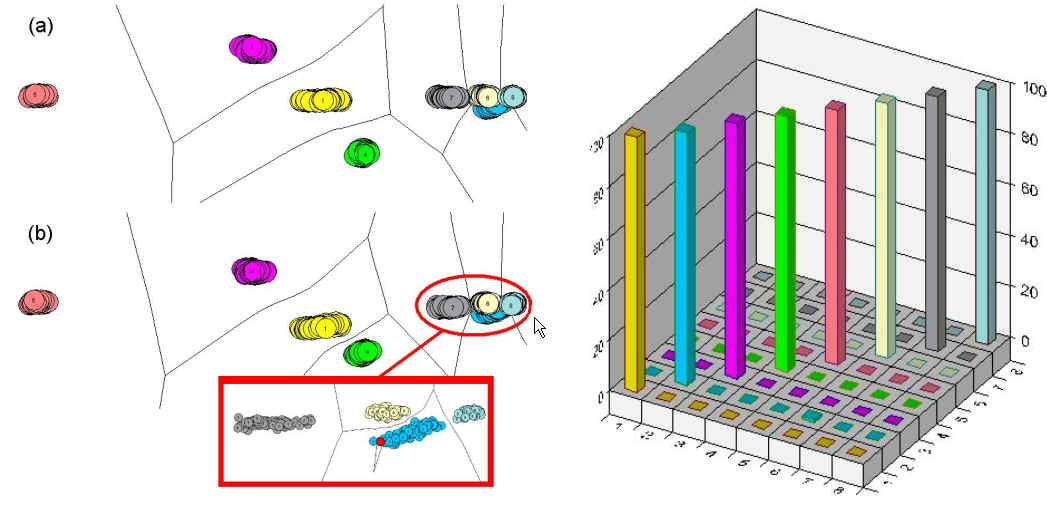
A recognition rate of 99.875%
(type 6 to type 2 confusion) was achieved in generalization, wheras
resubstitution was free of errors. By these investigations the color
classification system and the wireless color-sensor module was successfully
validated. In ensuing work, recent true-color sensors of MAZeT were employed to
achieve more capable color-sensor modules. Further, several modules were
implemented to allow the spatial registration of lighting conditions, e.g., in
home or working environments, such as briefly sketched in the following figure
from a feasibility study conducted with two partner institutions in 2003 in the
context of Ambient Intelligence activities:
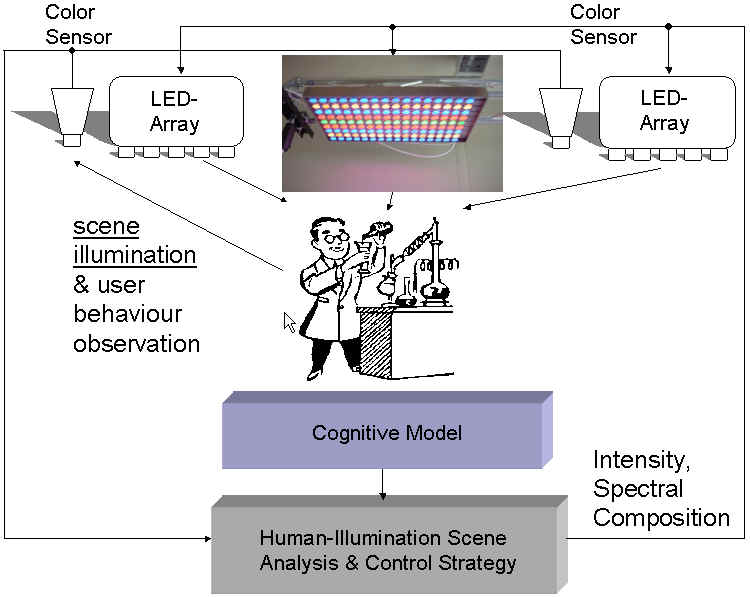
The color-sensor module will serve in teaching as a vehicle of
applying an analog neural network chip (SILIMANN; www.silicann.de)
for color classification in the Neurocomputing course of the institute.
Professional color sensing systems for industrial purposes meanwhile have become
commercially available. The color-sensor module is also considered as a research
vehicle for our work on reconfigurable analog and mixed-signal electronics, e.g.,
replacing the transimpedance amplifier by a reconfigurable field.
| |
Status: |
|
concluded, duration 08/2003-12/2005 |
| |
Partner: |
|
|
| |
Financing: |
|
Local Priority Programme
Ambient Intelligence in 2003, Self-Financed in 2004 and 2005 |
| |
Contact: |
|
Prof. Dr.-Ing. Andreas König |
| |
Contributors: |
|
Thomas Gräf (Student assistant, HIWI) |
| |
Publications: |
|
|
| |
|
|
T.
Gräf and A. König. A Prototype
of a Wireles Color Sensor Module for Automated Quality Inspection, Object Recognition
and Color Sensor Networks for Intelligent Illumination Systems.
In Proc. of Int. Conf. on Instrumentation, Communications and Information Technology
ICICI 05, Institute Teknologi Bandung, Bandung, Indonesia, August
3-5, pp. 780-785, 2005. |
| |
|
|
|











